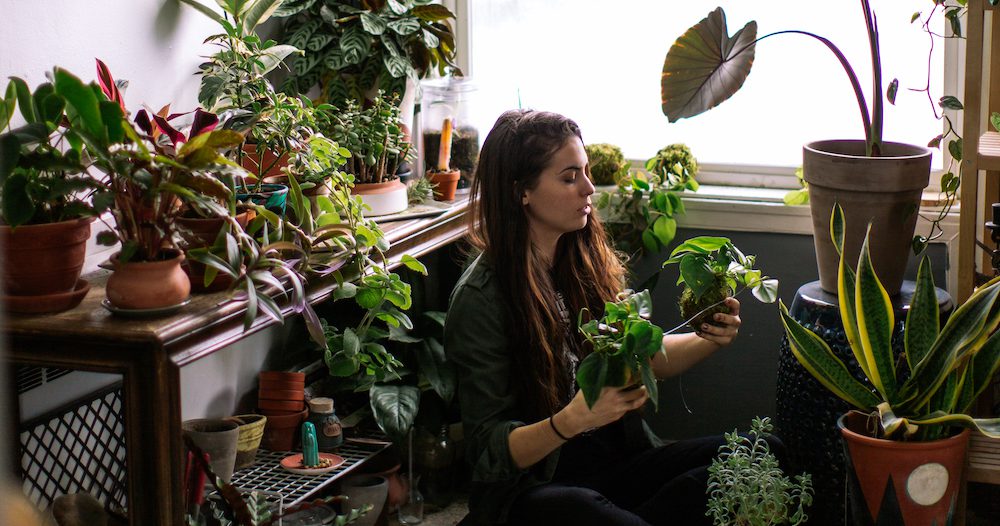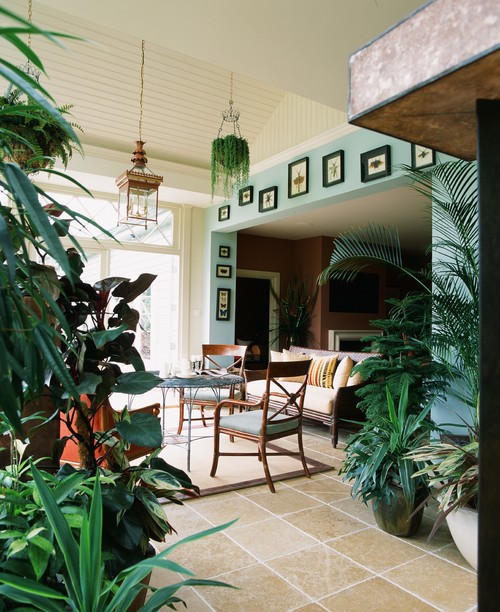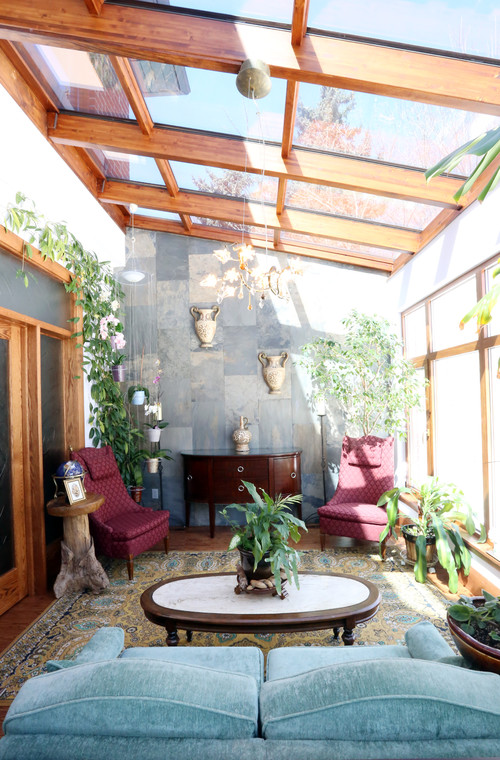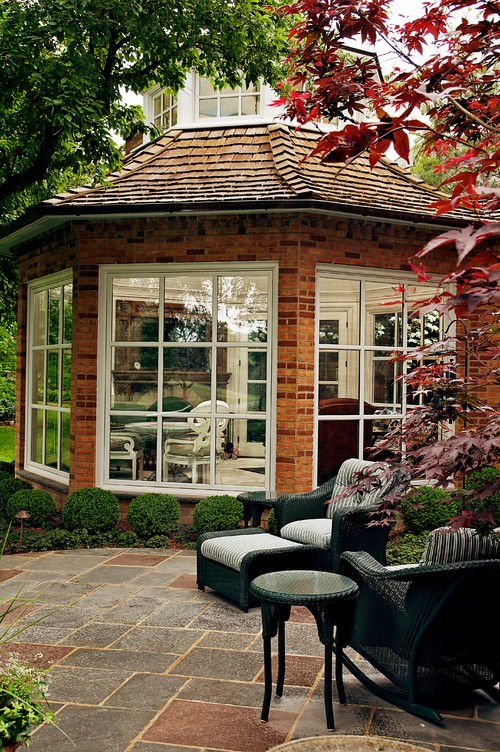
timnewman / Getty Images
Ever imagine having your own secret garden without the hassle of dealing with the heat or the bugs? Enter the garden room, a hot trend offering homeowners a lush, green escape they can enjoy without ever leaving the house.
A garden room is just what the name would imply: a room full of plants that brings the garden into the house. Although they’re similar, a garden room is not the same as a greenhouse. The latter is a glass structure built separately from the main residence, typically in a backyard, where a homeowner grows everything from flowers to vegetables to herbs.
A garden room, on the other hand, is also called an atrium. It’s typically insulated with electrical outlets and can be free-standing or connected to the home, says Joan Mazat, head of new product development for Ball Horticultural Co. in Chicago.
Built to be used year-round, a garden room is typically used to grow decorative rather than edible plants.
In this form, garden rooms have been around since the 1970s, says Pablo Solomon, an artist and designer from Austin, TX.
Solomon, who’s known for his work in the environmental movement, says the resurgence of garden rooms is part of the sustainability movement, whose aim is to reduce our carbon footprint and create a healthier environment inside and outside the home. The obsession with houseplants is also moving beyond the millennial generation.
You can create a garden room that’s fairly simple or completely over the top. Follow these tips on how to create a garden room no matter your budget.
Start with a few plants
 Photo by Westbury Garden Rooms
Photo by Westbury Garden Rooms
Yes, it really is this simple.
“Any green plants in your home will be a positive,” Solomon says.
Depending on your space, you can place a few small African violets along a windowsill, hang some ferns from the ceiling, or load the corners with potted houseplants.
Add a glass roof
Photo by Memar Architects Inc.
If you want to add an extension to your home to accommodate a garden room, you can take your cues from greenhouse structures. Adding a glass roof or a wall of windows lets in ample sunlight for your plants to thrive.
Plants do well when facing east, west, or south, since these exposures get the most sunlight (at least during the colder months), so keep this in mind when deciding where to add windows to your home. It’s best to avoid north-facing glass.
If your garden room is fairly shady, no worries. Some plants such as lilies and ferns thrive in low-light conditions. Here are more plants that don’t need much light.
When it comes to the type of glass, Mazat recommends “double-glazed windows for year-round use, single pane for summer-only use.”
Go full gazebo
Photo by Dan Waibel Designer Builder
If you want to feel like you’re outside in the garden even when it’s chilly outside, consider a gazebo, a structure with six glass walls. Styling your addition after a gazebo that would sit inside the garden offers the best of both worlds: the feeling of being outdoors while being inside.
Take your cues from the jungle
There’s really no limit to the number and type of plants you can add to your garden room. Mazat suggests drawing from the jungle, mixing your flora with annuals so you’ll have different color combinations throughout the year.
“Flowering plants that have an in-home bloom time for about 30 days are a great addition for color accents that can be changed monthly for a new splash of color decor, such as kalanchoe, gerbera, African violets, cyclamen, and more,” Mazat says.
The post Love Plants? Then This DIY Garden Room Is for You—Here’s How To Create It appeared first on Real Estate News & Insights | realtor.com®.


No comments:
Post a Comment